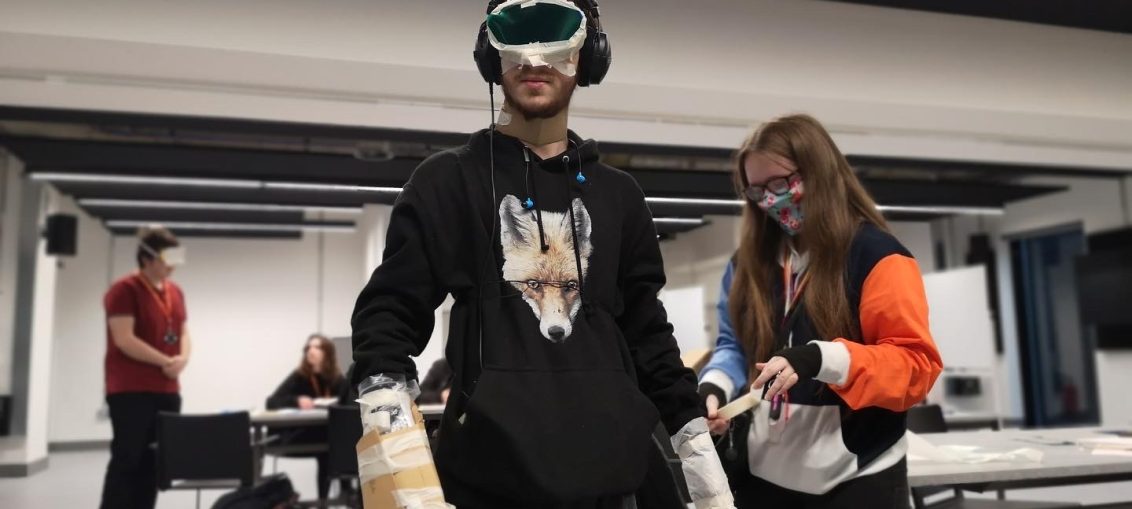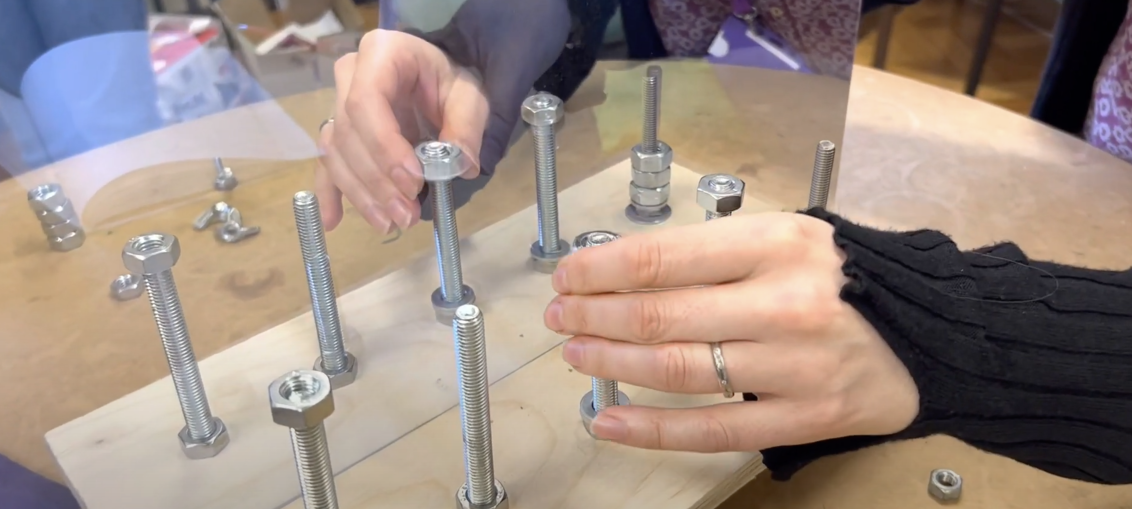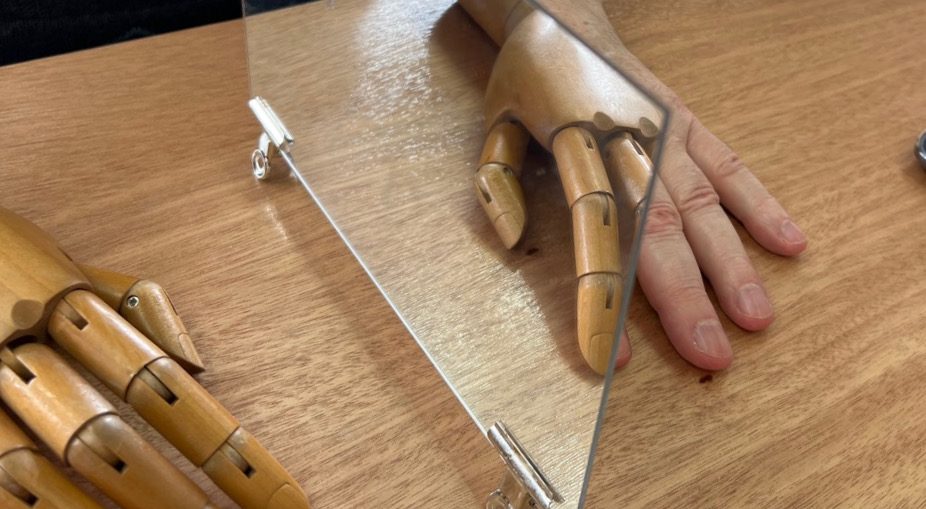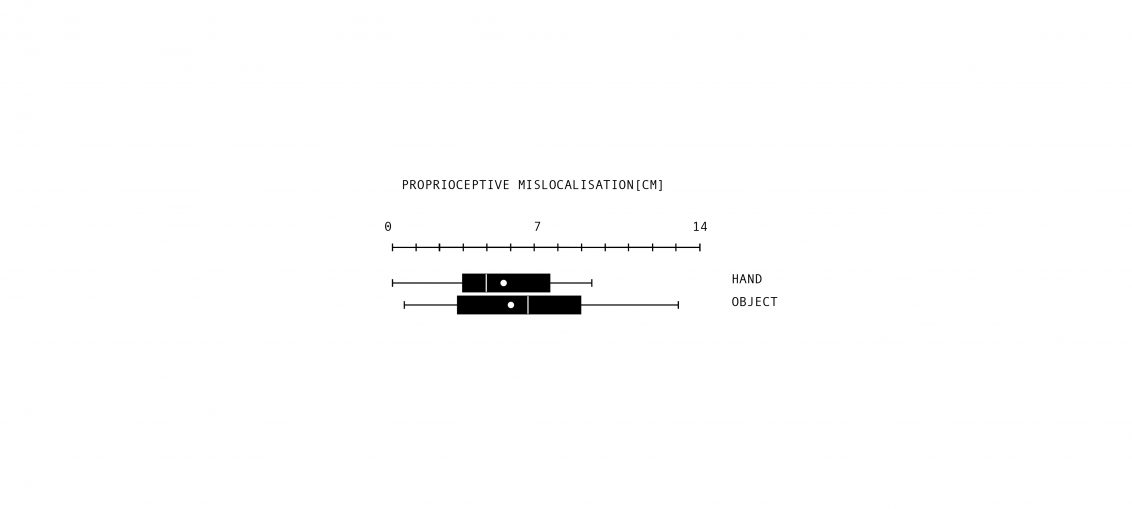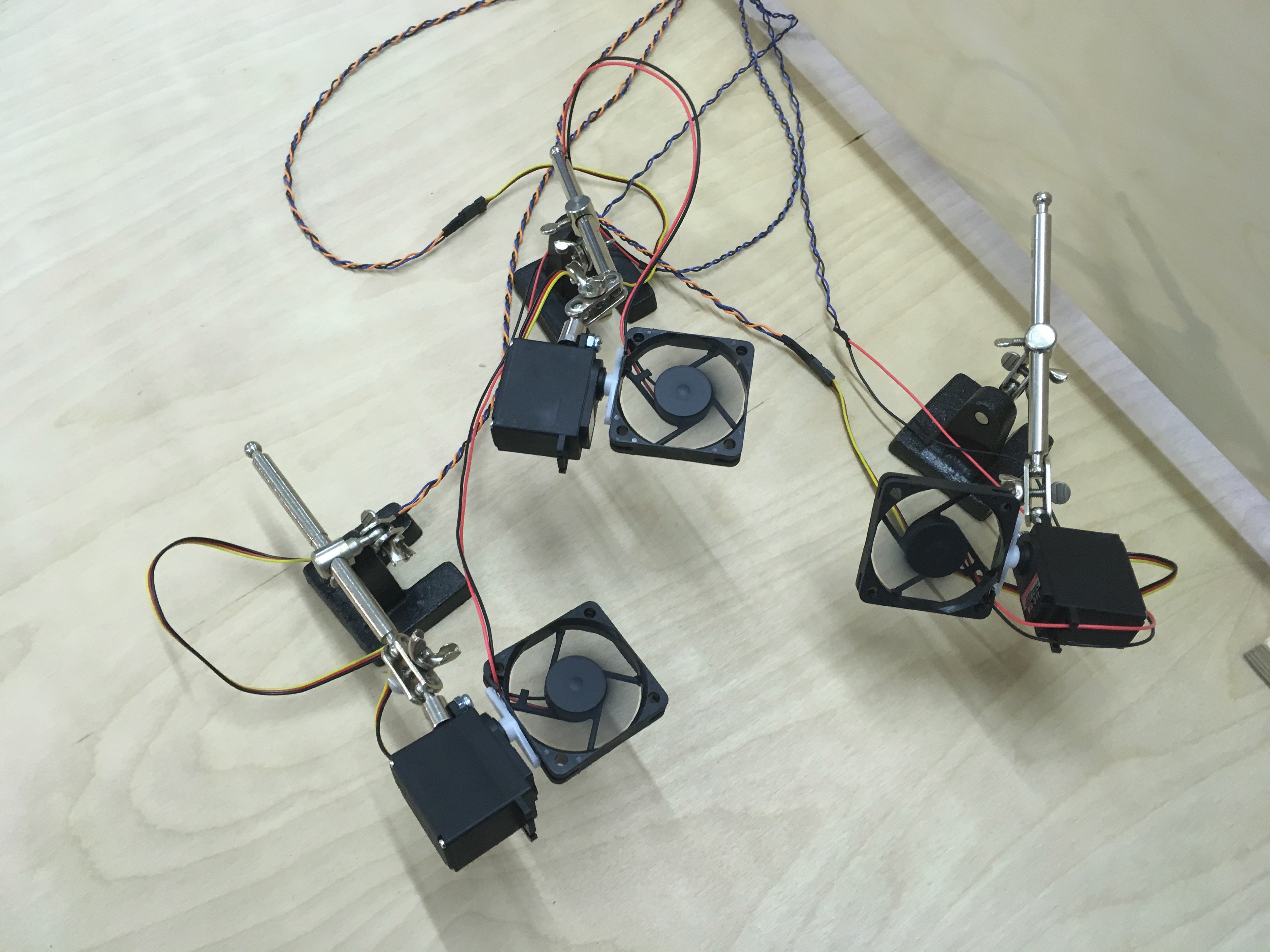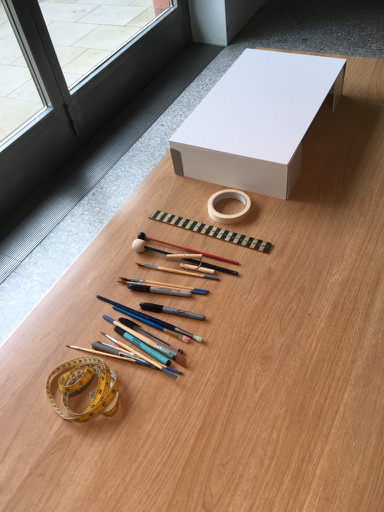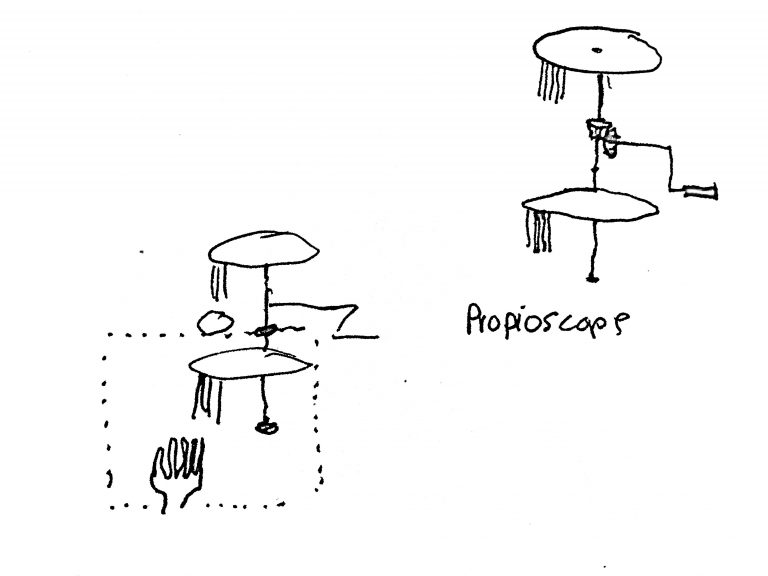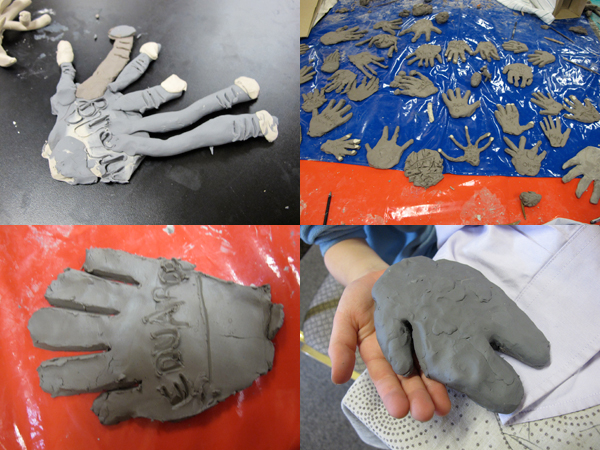These workshops took place at the School of Digital Arts (SODA) as part of the 'Co-Lab' unit, which is intended to get students working collaboratively across disciplines (Game design/sound/future media/film/photography). The 'messy interface' brief asked students to address the complex interface between real and unreal. My workshop was designed to get students working together and thinking about how our senses interact and how we can hack, or creatively disrupt the sensory interface. We looked at the long history of perception-changing technologies; from the microscope to early VR experiments, and the many strategies both artists and scientists have used to disrupt these technologies. After exploring some perceptual illusions and discussing our experiences, participants designed their own multisensory experiments that restricted, augmented,
Tag: rubber-hand-illusion
Experience in action: Work in Progress
This page has some notes and background info on the activities and experiments we are employing for the Experience in Action project with Body Eyes and Movement (BEAM) Lab at the University of Manchester. As part of my PhD research, I ran a number of workshops on perceptual illusions (all inspired by research at BEAM Lab and conversations with Dr. Ellen Poliakoff who also acted as one of my PhD supervisors) . The workshops often used the Rubber Hand illusion (RHI) and its many variations as a starting point. I gave participants instructions and asked them to experiment with different stimuli materials and arrangements and devise new experiments of their own. I found that observing participants experimenting and playing with ideas,
Experience in Action
The Clay Hand Illusion and the Embodiment of Unfeasible Objects
"In an artistic exploration, clay hands and non-hand-like, unfeasible clay objects were created by the participant and used to perform an alternative version of the rubber hand illusion. Most participants felt ownership even over these unfeasible objects, raising questions about the embodied experience of objects that we make." https://journals.sagepub.com/doi/full/10.1177/0301006620948502
Sciart Podcast
I was interviewed by RAH! for their Sciart podcast series. We ended up talking about some of my old works about my interest in amateur science and drawing and a little about my latest research for the PhD [Rubber and clay hands] RAH! Podcast at Manchester Met · Science and Art: Illustrating Scientific Ideas
Questionnaire results
Seven practical experiments
A manual for self-experimentation and a template for performance / A workshop on perceptual illusion and art. https://www.eventbrite.com/e/seven-practical-experiments-tickets-72221088219 'Seven practical experiments' is a new piece of work for by Antony Hall, developed through an exploration of perceptual illusion, and the methods used in experimental psychology. By taking part in this workshop, you will both 'experience' the work and 'perform' the experiments; in doing so you will become the work. The experiments will be preceded by a session of Feldenkrais led by Teresa Brayshaw. Feldenkrais is a method of enhancing self-awareness through movement and the heightening of bodily perception. Following this activity, you will then be guided through the 'seven practical experiments' and given space to reflect and discuss what you have experienced.
Action Intention Paradox
In this experiment, which is now renamed the 'Alien Hands Experiment' one participant [A] places their hands under a flat-screen monitor. They then see what seems to be their own hands under the screen when in fact these are someone else's hands [B] who is mirroring their actions. The effect can be quite uncanny especially if the appearance of the hand contrast with their own [in scale, age or colour. Participants work together to lead or mirror the movements of what appears to be their own hands under a screen. After a short time, participants experience strange sensations which oscillate between a loss of agency over their own hands and feeling agency over someone else's hands. Action Intention Paradox uses a
Rubber/clay Hand experiment UoM
I supported some seminars on the Rubber Hand Experiment with undergraduate psychology students, presenting some of my research ideas [unfeasable objects and the Clay Hand Experiment] The idea was they experience the experiment for themselves before designing their own.
Tactile Anchoring Device prototype 2
The first film of the Tactile Anchoring Device in progress, showing the use of brushes and fans to generate the illusion of an invisible hand... https://youtu.be/vHaB6HBbQrs The system is based on an Arduino controls two sets of identical stimuli which move in synchronisation with each other [ servo motor, articulating solenoids, fans, lamps etc] Once the participant is experiencing the illusion, the operator or autonomous systems can trigger a ‘shock’ or threat stimuli. This is currently in the form of a solenoid which releases a heaved plum line weight which drops into the empty space. See the project page here. http://antonyhall.net/blogtactile-anchoring-device/
The Multi-faceted body
A few notes from the BRnet Conference the Multi-faceted body. June 2018, Heriot-Watt University, Edinburgh, UK I felt strangely at home among so many research projects that use the hand as a model for the wider issues of body representation and ownership. Keynote speaker Mel Slater's talked about his playful and engaging research. Slater’s work centres around the idea of using immersive virtual reality as a medium to transform the self, not just the reality of a space. His research projects include self-help therapy. The project Personified Self Interaction (Osimo et al., 2015) allowed ‘you’ [embodied within an avatar of Freud] are able to talk to ‘yourself’ [an automated replay of you, embodied within an avatar of yourself] and vice-versa. This enables the
Clay Hand Experiment – Whitworth Art Gallery
This was the first of the public workshops performed specifically for my research. My experiments so far have taken place as 1-1 sessions in artists studios or at the university. In a more open drop-in format, the participants were invited to experiment on themselves. Opening up the environment to one of play rather than pure participation. Breaking the experimenter/participant loop, creating a flexible relationship between myself and the participants. This was more in keeping with the idea of a phenomenological investigation allowing the experience to ‘unfold’. This had a dual effect of actively involving and empowering the participants while being able to observe the process from the outside. This meant notes and make recordings could be taken more effectively. Further reading:Read more
Proprioceptive drift visualisation
[wpvideo VartTqKO ] My experiments show a strong ‘drift’ in the perceived location of the hand before and after the experiment. This is known as proprioceptive drift. I asked people to locate the position of their index finger under a platform before and after embodying a clay object. And also draw their hand without looking before and afterwards. This animation shows these superimposed, illustrating the drift away from the real location of the hand.
Radiona workshop, Zagreb
I'm doing a workshop related to my research, perceptual illusions and altering perception through experiments, Clay hand illusion and other activities based on sound and light and taste, at Radiona Zagreb, 21-22/04/2018 https://radiona.org/ check out the web Re-mapping the senses workshop page and resources here...
Mechanically Augmented Reality
When I first learned about the Rubber hand illusion [RHI] I immediately began to think about ways in which the process could be automated to create an artwork, in which the experimenter's presence was removed. This could be done using sensors and a microcontroller to articulate solenoids to tap fingers for example. That thought train was on a back burner until discovered the work of fellow MMU PGR Lin Charlston. As part of her PhD research [See her profile here 'The Multimodal book as organism, artefact and assemblage: non-human agency in processes of growing and making'] She invented a beautifully simple, entirely mechanical device just to do exactly this. Your hand is placed inside a box, while the other hand turns a crank. On top of the box, another rubber hand
On the embodiment of unfeasible objects
Further to my last post detailing experiments relating to the embodiment of invisible and even third hands, here are some notes on my first 'Clay hand Illusion' experiments... The ‘Rubber hand illusion’ shows it is possible to convince participants that a rubber hand is their own by placing it in front of them while stroking it in the same way as their hidden real hand. The use of self-made clay hands, or objects [see below] in place of the rubber hand raises several interesting possibilities for exploration, which move away from the embodiment of replica body parts, and towards the possible embodiment of modified body parts, or completely 'unfeasible' objects.The clay allows for the gradual and immediate morphing of forms and for the
Blind drawing of hand
Blind drawing of hand starting from the left and using a continuous line, before and after experiments. Could this exercise be used as a measure of "proprioceptive drift" before and after 'Rubber hand illusion' type experiments? I will be exploring this idea soon with the research group at BEAM lab...
Clay hand drawings
Here are are a selection of drawn outlines of clay hands created by workshop participants aged 6 to 12 for the original clay hand experiment (see posts tagged rubber hand or clay hand) Participants of all ages were asked to create a hand and use it in place of a replica rubber hand, the idea was to test if a self-created hand was easier to connect with. The hands were then taken and worked on further, sometimes becoming more distorted and abstract.
Rubber hands ‘feel’ touch that eyes see
The first report on the Rubber Hand illusion. Published in Nature in 1998 by Matthew Botvinick, and Jonathan Cohen of the Department of Psychiatry, University of Pittsburgh... "We report here an illusion in which tactile sensations are referred to an alien limb. The effect reveals a three-way interaction between vision, touch and proprioception, and may supply evidence concerning the basis of bodily self-identification." "It has been proposed that the body is distinguished from other objects as belonging to the self by its participation in specific forms of intermodal perceptual correlation7,8. Subjects in our first experiment who referred their tactile sensations to the rubber hand also consistently reported, in both sections of the questionnaire, experiencing the rubber hand as belonging to themselves. Indeed,
Rubber-hand illusion experiment
As part of my research into perceptual illusions, I looked into The ‘Rubber Hand Experiment’. This is a classic low tech experiment that can help us "understand how sight, touch and “proprioception” the sense of body position, combine to create a convincing feeling of body ownership, one of the foundations of self-consciousness (Nature 1998, vol 391, p 756 )”. Recent studies have gone on to experimentally induct of out of body experiences or create body swap illusions. See the work of Henrik Ehrsson and Olaf Blanke. [see link http://www.eurekalert.org/pub_releases/2007-08/ucl-foe081407.php ] I invited some psychologists to the studio [including Lizzi Lewis of BEAM Lab and Paul Sermon] who I have expertise in this area, they brought presentations and some kit to
Clay hand experiment #1
Working again with Lizzi Lewis of BEAM Lab and Manchester Science Museum we developed a workshop based on the 'Rubber Hand Experiment'. As we had to work with a large number of people and we didn't have funding to get loads of rubber hands. So we made the hands in the workshop with clay and used gloves full of different materials, sand, gel, lentils, etc. This had some interesting outcomes, that warranted further research... As you can see the hands were diverse in form, for the illusion to be effective the hand does not need to be true to life necessarily. Some hands were made purposefully alien for experiments and seemed to work effectively. I wondered if participants are more likely
